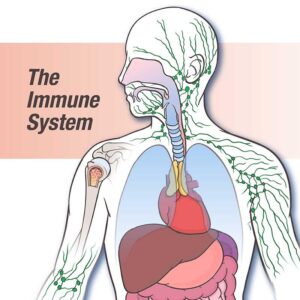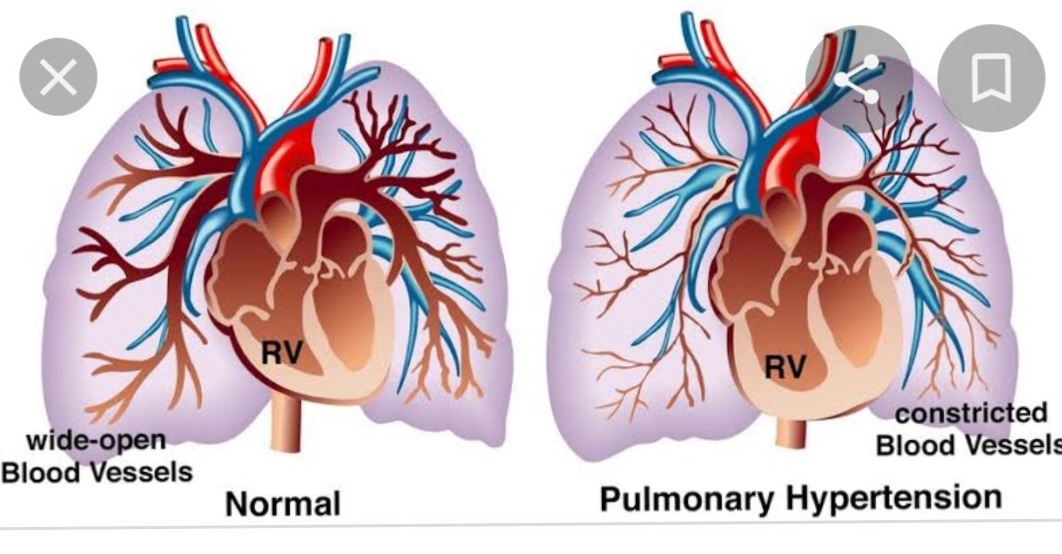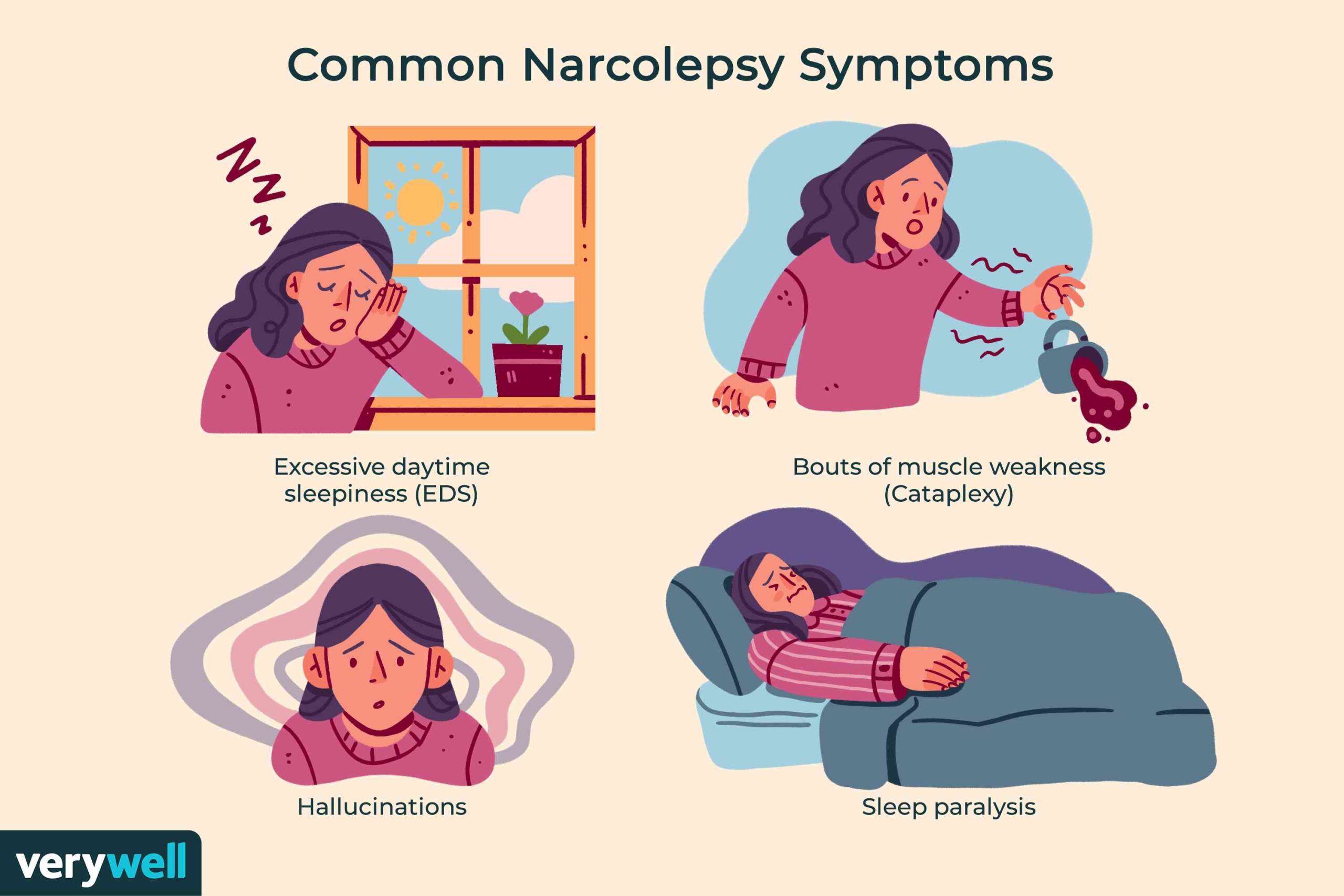What is Immunity?
Immunity refers to the ability of the body to prevent invasion of pathogens.Pathogens are foreign disease causing microorganisms. – The immune system is a complex system of organs, cells, and proteins that protect against disease and infection by identifying foreign invaders and neutralizing them. In order to do this effectively, the immune system must be able to distinguish between self-cells and non-self-cells as well as identify what type of cells these invaders are. This can be achieved through the use of antibodies which are produced in response to the presence of specific antigens.
Immunity is vital for the human body. The immune system prevents or limits infection. In the absence of immunity, the body would not be able to withstand attacks from bacteria, viruses, parasites, and others.
The immune system is a vast network of cells, organs, proteins, and tissues throughout the body.
A fully functional immune system can discriminate between healthy tissue and unwanted substances. If it detects an unwanted substance like bacteria, virus, or others it will initiate an immune response — an attack to protect the body from invasion. It also identifies and removes dead and faulty cells.
The immune system does not always get it right, however. Sometimes, immune mechanisms are not able to work effectively as the the person has some disease or disorder that affects immunity or needs certain medications that suppress the immune system.
In autoimmune diseases and allergies, the immune system by mistake perceives healthy tissue as unhealthy and lodges an immune attack, leading to unfavourable and or dangerous signs and symptoms.
In this article we will describe some of the main features of the immune system and it’s mechanism of defense of the body from pathogens and other invaders. We will also describe the problems that can arise with the immune system.
The various components of immune system
The various components of the immune system are:-
- white blood cells (leukocytes)
- the spleen
- the bone marrow
- the lymphatic system
- the thymus
- the tonsils, adenoids, and appendix
- White blood cells are in circulationn the blood and lymphatic vessels.
The lymphatic system has a network similar to the network of blood vessels. It carries lymph instead of blood. A lymph is a fluid that carries immune-related cells to the areas that require them.
White blood cells are in constant search for pathogens. When they detect one, they start multiplying and give signals to other cell types to do the same.
Storage of white blood cells In the body is in lymphoid organs.
These include:
The thymus: A gland behind the sternum where lymphocytes mature.
The spleen: An organ situated in the upper left of the abdomen where immune cells come collectively together and work.
Bone marrow: Bone marrow is the soft tissue in the center of the bones.It’s work is haemopoiesis- that means it produces red and white blood cells.
Lymph nodes: Lymph nodes are small, bean-shaped glands throughout the body, especially in the neck, underarms, groin, and abdomen. They link via lymphatic vessels. Immune cells come together collectively in lymph nodes and react with antigens .This can lead to enlarged lymph nodes.
The tonsils, adenoids, and appendix: These are main entry points for pathogens to enter the body, so lymphoid tissue is also there.
What does a high white blood cell count mean?
How an immune response works
The immune system needs to differentiate between Trusted Source healthy from unhealthy cells and tissue to work in accurate manner. It does this by recognizing signals called DAMPS — danger-associated molecular patterns.
The reasons for cell damage may be done the following –
due to bacteria or viruses
toxins, such as a bite or sting
noninfectious physical damage, such as burn
genetic problem within cells, as in case of cancer
An antigen is any substance that can trigger an immune response.
In several cases, an antigen is a bacterium, fungus, virus, toxin, or foreign body.
It can also be a cell that is faulty or dead.
There is detection by immune system of pathogen-associated molecular patterns — PAMPs — in the antigen. In this way, various parts of the immune system identiy the antigen as an invader and and attack it.
Types of white blood cells
Following are the different types of white blood cells
There are two important types of leukocytes, or white blood cells:
1. Phagocytes
These cells surround Trusted Source and absorb pathogens and break them down by effectively eating them.Thus the pathogens get destroyed.
These are of several types, including:
Neutrophils: These are also known as granulocytes.They provide an early response to inflammation. They kill pathogens but eventually also die as a result of it.
Macrophages: These clean up after an immune response. They remove pathogens, dead neutrophils, and other debris.
Dendritic cells: This activateTrusted Source the and help engulf microbes and other invaders.
Monocytes: These at times can differentiate into dendritic cells and macrophages, whenever needed.
Mast cells: These start an immune response when they detect an antigen.
2. Lymphocytes
Lymphocytes help the body remember previous invaders and recognize them if they return to attack again.
Lymphocytes are produced in bone marrow. Some of these lymphocytes remain in the marrow and develop into B lymphocytes (B cells); others which travel to the thymus become T lymphocytes (T cells). These two cell types have different roles.
B lymphocytes generate antibodies and help alert the T lymphocytes. T lymphocytes destroy compromised cells in the body and help to alert other leukocytes.
Natural killer (NK) cells -These are also lymphocytes. NK cells identify and destroyTrusted Source cells that contain a virus.
What is significance of low lymphocyte levels ?
The role of B lymphocytes is that
once B lymphocytes detect the antigen (antibody generators), they start secreting antibodies. Antibodies are special proteins They lock on to specific antigens.
Each B cell makes one specific antibody. For example , one might make an antibody against the bacteria causing pneumonia, and another might identify the common cold virus.
Antibodies are immunoglobulins These immunoglobulins play many roles in the immune response:
Immunoglobulin G (IgG) marks microbes so other cells can identify and deal with them
IgM specializes in killing bacteria
IgA is there in fluids, such as tears and saliva, where it protects gateways into the body
IgE gives protection against parasites and plays a role in allergies
IgD stays bound to B lymphocytes, helps them to start the immune response
Antibodies lock on to the antigen but do not kill it — their work is only to mark it for death. The killing is the job of other cells, such as phagocytes.
The role of T lymphocytes
There are distinct types of T lymphocytes or T cells.
Helper T cells (Th cells) do coordination of the immune response. Some Helper T cells communicate with other cells, and some cause stimulation of B cells to produce more antibodies. Others attract more T cells or cell-eating phagocytes.
Killer T cells (cytotoxic T lymphocytes) attack other cells. They are particularly useful for destroying viruses. They work by recognizing small parts of the virus on the outside of infected cells and destroying the infected cells.
Function of natural killer cells
Also a type of lymphocyte, these contain granules with powerful chemicals. They attack many types of unwanted cells.
Immunity- The immune system becomes stronger on exposure to different pathogens. By adulthood, most people have had exposure to a range of pathogens and developed more immunity.
Once the body produces an antibody, it keeps a copy so that if the same antigen appears again, the body can deal with it more quickly.
Some diseases, such as measles, can be severe if they occur, which is why expertsTrusted Source recommend vaccination. If a person has the measles vaccine, they are unlikely to get the disease.
If an unvaccinated person has measles once, it is also rare to get it again. In both cases, the body stores a measles antibody. The antibody is ready to destroy the virus next time it appears. This is called immunity.
Immunity is of 3 types in humans:
innate
adaptive
passive
Innate immunity is present since birth.
This helps humans to attack invaders from day one.
This innate immunity includesTrusted Source the external barriers of our body — the first line of defense against pathogens — such as the skin and mucous membranes of the throat and gut.
This response is general and nonspecific.
If pathogens are successful to bypass the innate immune system, macrophages will attack them. Macrophages produce substances called cytokines, which increase the inflammatory response.
Adaptive (acquired) immunity
A person’s protection from pathogens develops as through life.
This is due to vaccinations and acquirement of various diseases .There is development in the body of antibodies to different pathogens. This is referred to as Trusted Source as immunological memory as the immune system remembers previous enemies.
Passive immunity
This is a temporary kind of immunity that derived from another person.
For instance, a newborn receives antibodies from the mother through the placenta while in uterus before delivery and in breast milk after delivery.
This passive immunity gives protection to the infant from some infections during their early life.
Immunizations
Immunizations change the body in some way so it can respond effectively to various diseases.
The most common method is to introduce antigens or weakened pathogens into a person so the individual. This produces antibodies and does not become sick as the antibodies fight against the disease causing agent when the next attack of microorganisms occurs.
Because the body saves copies of the antibodies, it has protection if the infection reappears later in life.
Some diseases that doctors recommend Trusted Source immunization for include:
- COVID-19
- flu
- rubella
- polio
- chickenpox
- shingles
- measles
- mumps
- meningitis
- hepatitis
- Hib (Haemophilus influenzae type B)
- diphtheria
- tetanus
- whooping cough
- other diseases, such as yellow fever and typhoid, depending on where the person lives or travels
Immune system disorders
There are many ways in which the immune system can go at fault. Types of immune disorders fall into three types-
Immunodeficiencies
These arise when one or more parts of the immune system do not function.
They can result from:
a condition that a person is born with, known as trusted Source primary immunodeficiency
developments over time, for instance, older age(immunity is low in old age)
a disease that affects the immune system, such as HIV,
malnutrition,
obesity,
or high alcohol use
medical treatment, such as chemotherapy,
drugs to treat an autoimmune condition,
or medications to stop the body from rejecting a transplant(Steroids)
In autoimmune disorders the immune system by mistake targetsTrusted Source healthy cells rather than pathogens or faulty cells. It is not able to differentiate between healthy and unhealthy cells and tissue.
An example of this is IDDM(Insulin dependant diabetes mellitus) .In this the immune system by mistake targets the natural healthy islets o Langerhans in pancreas that manufacturer insulin, thus leading to diabetes mellitus.
Usually, this will occur in one part of the body, such as the pancreas. Destroying the pancreatic beta cells means the body cannot produceTrusted Source insulin and so type 1 diabetes results in.
Other examples of autoimmune diseases are-
- celiac disease
- rheumatoid arthritis
- Graves’ disease
- Hypersensitivity
- With hypersensitivity, the immune system reactsTrusted Source in an exaggerated or inappropriate way. It attacks everyday substances, such as dust, as if they were pathogenic organisms.
This occurs in case of asthma-
food allergies and sensitivities
atopic eczema
A severe reaction can lead to anaphylactic shock, where the body responds to an allergen so strongly that it threatens life.
Frequently asked questions regarding immunity –
Below mentioned are some answers to questions people frequently ask about immunity.
How can I improve my immunity?
Tips for boosting immunity are-
- Consuming a varied diet that favors fresh fruit and vegetables, whole foods, and lean protein
- limiting the intake of added salts, fats, sugars, and alcohol
- exercising regularly
- getting enough sleep
- maintaining appropriate body weight
- quit smoking
- People should find out which foods can boost the immune system.
What types of immunity are there?
Innate immunity is regarding the Trusted Source ,the defenses which are present since birth, including the skin, mucous membranes, and various components of the immune system.
Acquired immunity comes from vaccines and after acquiring infectious diseases. These enable the body to develop antibodies that can help it fight the same disease a second time.
Passive immunity is protection that comes from another individual, for example, when a newborn is temporarily immune to certain diseases because their mother has immunity and this immunity is transferred to the foetus through the placenta, and to the newborn through the mother’s milk. So Paediatricians always recommend mother’s milk to the newborn rather than artificial milk.
Why is importance of immunity ?
Immunity protects the human body from bacteria, viruses, and other pathogens that could lead to life threatening diseases.
Summary
The immune system is a complex system that is important for survival. When the body experiences harmful invaders, such as a virus ,bacteria or others , it launches an attack to destroy the pathogens.
People are born with some types of immunity, but exposure to diseases and vaccinations can also help boost the body’s defenses.
Some people have a weakened immune system because of health pathology or medication use ,for example -steroids. A physician (MD General Medicine doctor) can advise on protection of a person’s health when living with an immune system that has become weak.
Ways of boosting immunity include dietary and exercise choices, avoiding alcohol and smoking, and having appropriate vaccinations.





